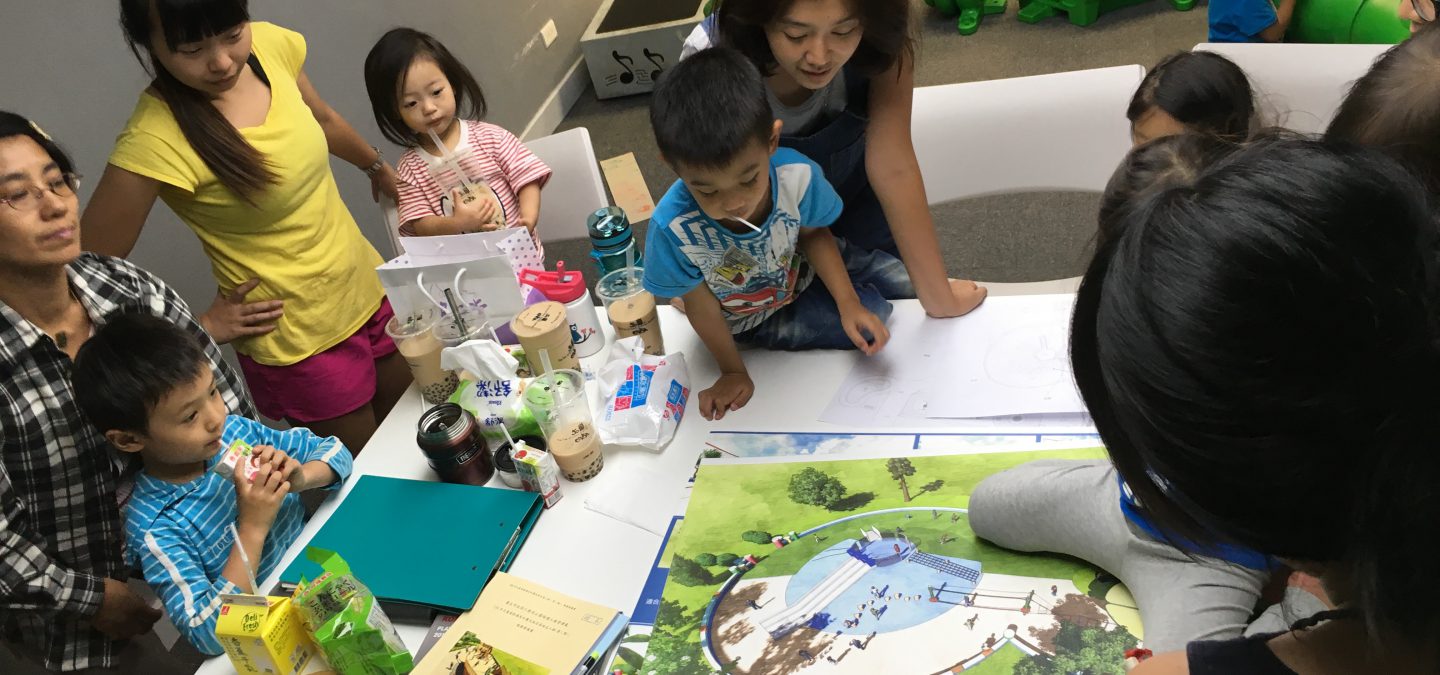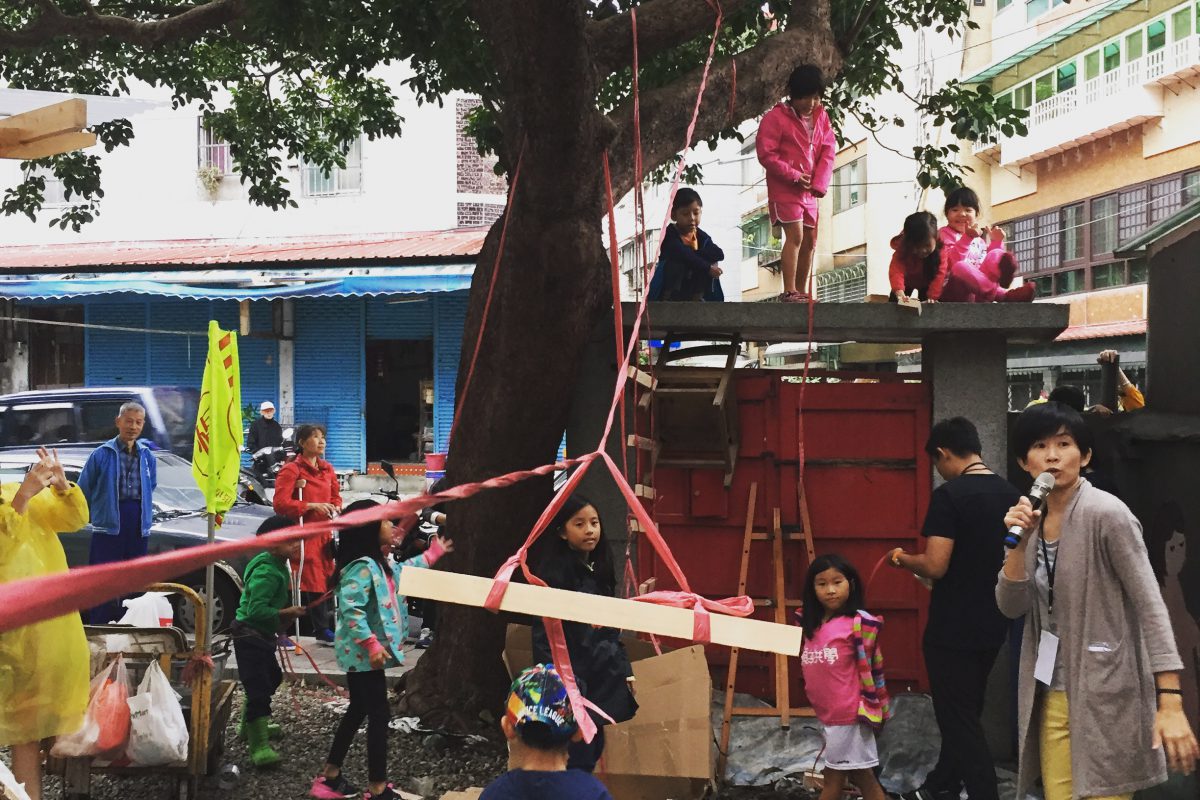
Keep up with our latest news and projects!

Creating a healthy and livable built environment is one of the main tasks in the urban planning profession. The basic assumption of the planning goal supposes to be if the built environment is healthy and livable for all, it also applies to children. However, on the long way to pursue for healthy and livable built environment for all, the right of the city for vulnerable groups like children are very often underestimated and under-prioritized, causing negative consequences of them. This article argues that vulnerable groups like children should not be the minor beneficial receivers once planners achieve our grand vision. By placing children’s right at the main planning stage, an urban environment that is healthy and livable to children would also be healthy and livable for all. To do so, in this article, we propose several planners’ insights for planners to think along their practice.
In conventional planning practice, from large-scale master plan to small-scale neighborhood redevelopment plan, there is often little space to take care of individual users’ group among the rigid physical and social infrastructural concern. Design and planning implications for children is often limited to the location and size of the school in land use plan. In a smaller scale, playground could be a part in the park and urban open space. Concerns regarding the use of space are dominated by safety measures. The rising protective attitude of parents toward children increasingly influences the design and regulation. Also in cultural perspective, the underestimate of the value of play in Eastern context, or to raise children in suburban in Western context, both indirectly cause children become the lost piece of the picture of urban development. Moreover, the increasing privatization and securitization of public space sets limits to the accessibility and public-ness of space.
Nevertheless, when we try to take children and their right of city into account in the vision of healthy and livable urban environment, we surprisingly find the topic of child-friendly city can unify important urban issues on building our desirable urban future. According to the report ‘ Cities alive—designing for urban childhood’ published by ARUP, it points out a child-friendly city would also benefits the health and well being, local economy, safety, stronger communities, nature and sustainability, resilience and become a catalyst for improving cities (ARUP, 2017). In the fastest urbanizing era of human history with threatening environmental degradation and high-density urban development ever, to plan for our future generation could not be neglected anymore.
Every adult used to be a child, but what should the city look like for livable urban childhood? Is it possible for children to enjoy the city in a safe condition? In particular, from the city at eye level perspective, what are key issues for child-friendly urban public spaces that planners can address our attention? Based on the play campaign experiences in Taiwan, observations from urban planning approach could shed light on several aspects.
First, urban planning culture matters. It is important to work toward child-friendly city with the support of public institutions. As in post war period in the Netherlands, the architect Aldo van Eyck was only possible to built more than 700 playgrounds in the city Amsterdam with the support of Jacoba Mulder and Cornelis van Eesteren from the governmental organizations (Lefaivre, 2007). In Taiwanese experiences, there were little space for planners and designers contribute their profession in child-friendly public spaces until the play campaign group ‘Parks and Playgrounds For Children by Children (PFC) did effective lobby works to policy makers. That is also to say; to engage with social groups outside of planning profession is a good strategy to open up more experimental working possibilities within conservative and conventional planning culture (Lin et al., 2018).
In the case of play campaign on public playgrounds in Taiwan, the major problem is civil servants intend to lower the risk as much as possible in playground. It leads to the consequence that most play equipment in playgrounds is only for lower age children that bored bigger age children. The example indicates that indeed it is a critical issue for planners to consider the balance between risk assessment and safely regulation. Yet what adults often forget is among 0-12 years old children, different age groups have completely different needs in physical and psychological development, which also reflect on their demands of play types, spaces and challenges. For planners and designers, it is important to aware besides safety regulations as design and planning instructions, to have delicate understanding of needs and development stages among children’s age group is another critical issue for creating playful urban environment.
 Observe and play with children is more effective than verbal communication in design process
Observe and play with children is more effective than verbal communication in design process
Urban childhood environment is not only about schools and playgrounds. In a larger scale approach, what are safe and playful paths for children’s daily mobility? To what extend, urban environmental quality would make impact on health and wellbeing issues of children? Among multi-users in public spaces, children are easy to be targeting as noise and chaos-maker. As planners, how we can improve in reduce tensions among families, children and other users in public space through a more thoughtful socio-spatial arrangement? And most important of all, where and what are voices of children themselves? How to take children’s opinion as part of the work input? There are more issues as planners we can take care of to create a friendly urban childhood environment.
In a smaller scale, it is possible to plan and design with children. Project Tong-an St. 87-1 in Taipei city is an experimental project initiate by PFC and ‘Eyes on Place’ (EoP)—a web-based platform formed by a group of urban designers and planners care about public space. In this project, a community play space is carried out with planners, designers, children and community residents from planning, design to construction phase.
During the workshop, by working with children closely enough, we realize the first thing to plan with children is to learn from children. Event planning-wise, from programs like storytelling, neighborhood environmental observation games, we create a collective atmosphere for warm up. In the design and planning phase, first, we tried to ask children questions like ‘what do you want to play on this site’? Yet very quickly we realize answers have low reference value. Either they answered with an imaginary scenario (I want to play in a space station!) or very fragmented due to language development capacity (I want to play water here). The most troublesome is the wanting oriented questions are an easy link to expectations, which make it harder to promise unrealistic dreams to our young participants.
Instead of asking directly, we develop a certain method that by offering simple unstructured and random materials, by playing with children and observe how they organize the play activities? What particular physical and social actions they prefer and specify in age groups? (For example, challenge the height, crease secret corner to hide etc.,) How children manage risk in a rather challenge physical environment? (Climbing trees and walking on street without pedestrian) Certain observation outcomes have potential to be translated into planning guidelines and design languages.
Through the experiment project, we also learn that as urban planners and designers, there are many skills we need to learn and cooperate from other disciplines. For example, methods of observing and documenting the play behavior, communicate with children without promising implications, decrypt children’s language from imagination scenario to actual planning content. Also, we realize roles like play experts who know how to facilitate collective play with young participants, play instructors who know how to translate children’s demand from their language into professional language, are necessary in the process of planning with children.
The practice experiences of planning with children are just a start. The more we involve, the more we realize what is more we need to learn and develop the emerging scenarios that take children more seriously in the planning blueprint. With pointing out several knowledge and practice gaps, we hope to shed light on these aspects that urban planners and designers can work further to explore more nuance in the production of children friendly public space. All in all, key insights for planners contribute to the implementation and integration of child-friendly cities paradigm into the planning profession.
Interested? Join The City At Eye Level and share your story!
Discover more– ARUP (2017). Cities alive—designing for urban childhood
– Lefaivre, L. (2007). Ground-up city: Play as a design tool. 010 Publishers.
– Lin, Y. T, Chen, I.H, Hsieh, W.C (2018) The escape of ‘trapped experts’: alternative social engagement to
enlarge working space for professionals in planning practices. AESOP Young academics, Groningen